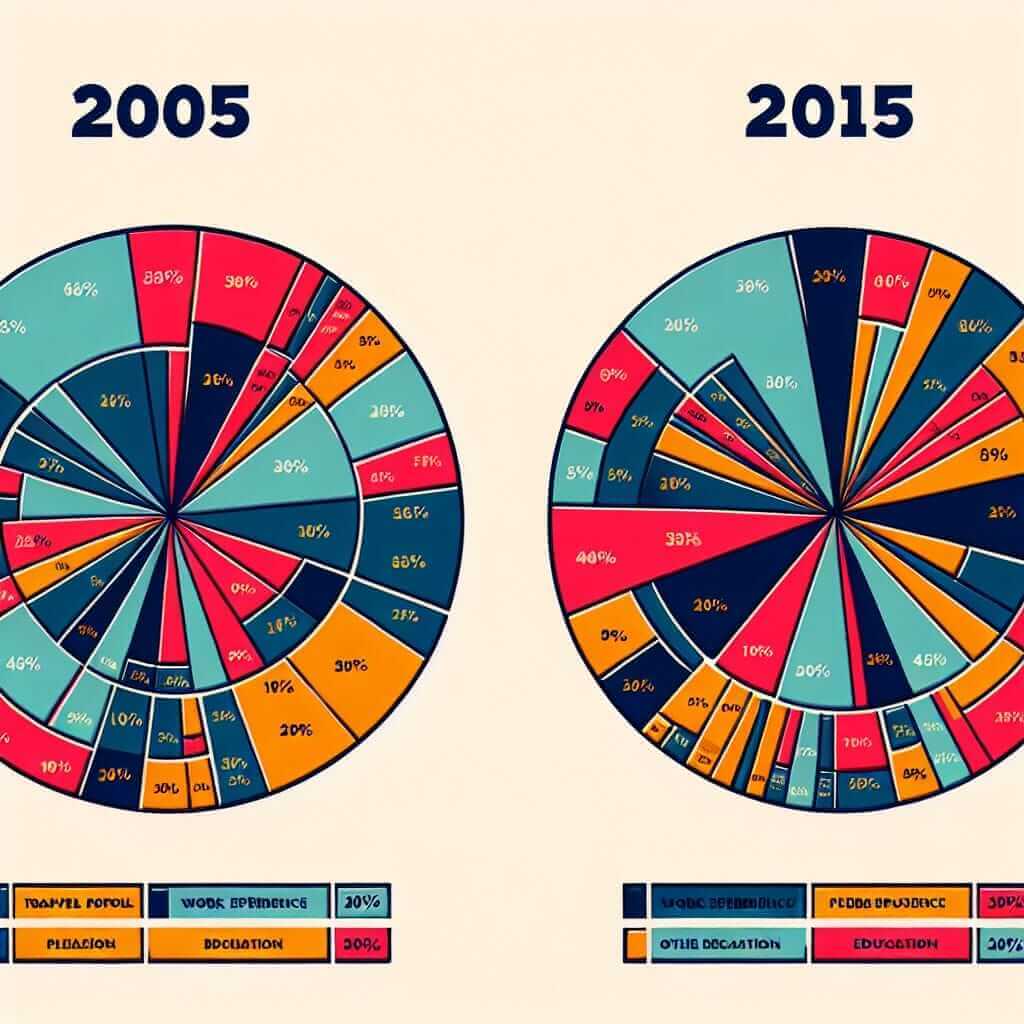As an IELTS instructor with over two decades of experience, I understand the challenges students face with the Writing section, particularly Task 1. One common graph type you’ll encounter is the pie chart. This seemingly simple visual representation of data requires a specific approach to secure a high band score. This article will equip you with the essential knowledge and skills to analyze and write about pie charts effectively.
Understanding Pie Charts in IELTS Writing
Pie charts present data in segments of a circle, with each segment representing a proportion of the whole. Your task is to translate this visual information into well-structured, accurate, and insightful written discourse. Mastering pie chart description is not just about understanding percentages; it’s about identifying trends, comparing data sets, and highlighting key features using appropriate vocabulary and grammatical structures.
Writing a Band 7+ Pie Chart Description
Here’s a step-by-step guide to crafting an effective pie chart description:
1. Analyze the Chart Carefully
- Identify the main topic: What does the pie chart show? What is the title?
- Examine the segments: What are the different categories? What are their proportions?
- Look for trends: Are there any significant differences or similarities? Are any segments notably large or small?
2. Structure Your Response
A well-organized response is crucial for coherence and clarity. Follow this structure:
- Introduction (Paraphrase the Task): Begin by paraphrasing the information provided in the question. For instance, if the question says, “The pie charts below show the main sources of energy in a country in 1990 and 2010,” you could write: “The given pie charts illustrate the changes in energy sources utilized in a particular nation over a twenty-year period.”
- Overview (Summarize Key Trends): Highlight the most important trends or patterns. For example, “Overall, it is evident that renewable energy sources gained significant ground over the two decades, while fossil fuels saw a decrease in usage.”
- Body Paragraph(s) (Detailed Description): Provide specific details about each segment, using data from the chart to support your statements. Use comparative language where relevant (e.g., “twice as much,” “a smaller proportion”).
- (Optional) Conclusion: A conclusion is not always necessary for Task 1, but you can use it to restate the most striking trend or observation.
3. Use a Variety of Language
Avoid repetition and demonstrate your vocabulary by using synonyms and a range of grammatical structures:
- Percentages: In addition to “percent” or “%,” consider “the majority,” “a minority,” “nearly half,” “just over a quarter,” etc.
- Proportions: Use phrases like “the largest segment,” “the smallest proportion,” “account for,” “constitute,” “make up,” etc.
- Trends: Employ verbs like “increase,” “decrease,” “rise,” “fall,” “remain stable,” “fluctuate,” etc.
4. Example from an IELTS Test
Let’s look at an example:
The pie charts below show the main reasons for travel among young people in the UK in 2005 and 2015.

Write a report for a university lecturer describing the information shown.
Sample Answer:
The provided pie charts illustrate the primary reasons why young people in the UK traveled in 2005 compared to 2015.
Overall, the most striking change is the significant increase in travel for educational purposes, while travel for work experience declined notably over the ten-year period.
In 2005, the most common reason for travel among young Britons was to gain work experience, with 35% of trips attributed to this motive. Travel for pleasure accounted for a slightly smaller proportion at 30%, followed by education at 20%. The remaining 15% traveled for other reasons.
By 2015, the landscape had shifted considerably. Educational travel surged to 45%, becoming the dominant reason for journeys abroad. Conversely, work experience as a motivator for travel plummeted to just 10%. Pleasure travel remained relatively stable, experiencing a minor dip to 25%.
Tips for Success
- Practice Makes Perfect: Familiarize yourself with different pie chart scenarios and practice writing descriptions regularly.
- Time Management: Allocate your time wisely in the exam. Aim to complete Task 1 within 20 minutes.
- Proofread Carefully: Always proofread for grammatical errors, spelling mistakes, and clarity of expression.
By following these guidelines and practicing consistently, you’ll be well-equipped to confidently tackle any pie chart question in the IELTS Writing Task 1. Remember, clear analysis, accurate data representation, and a good command of vocabulary and grammar are the keys to achieving a high band score!